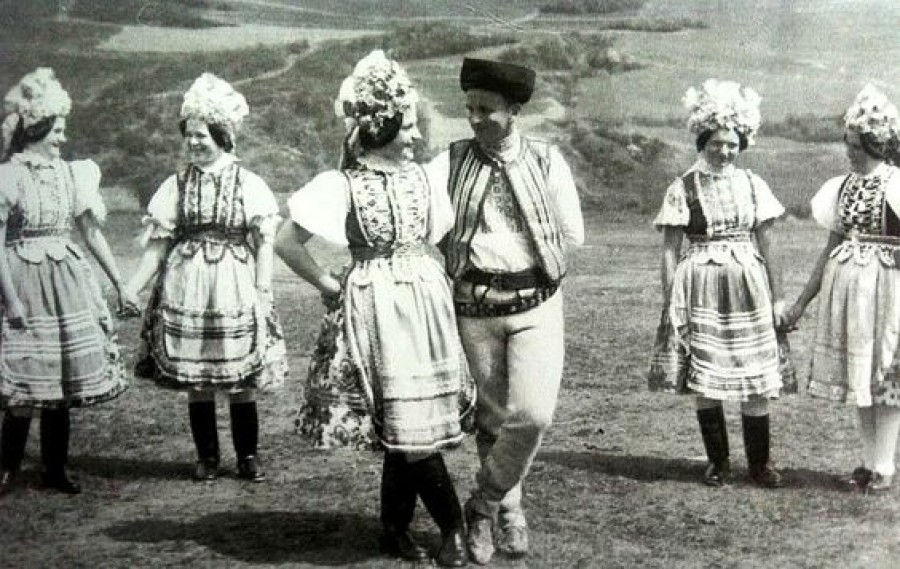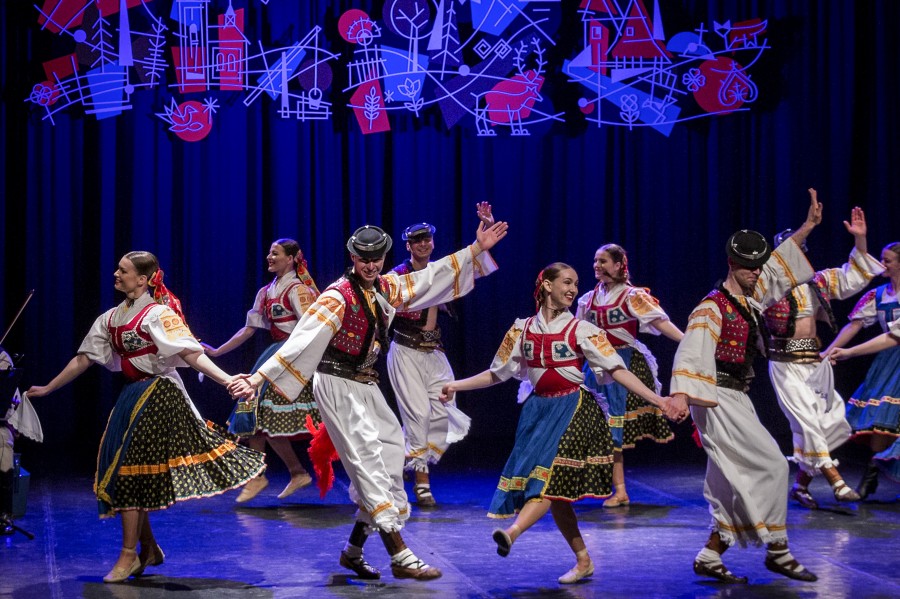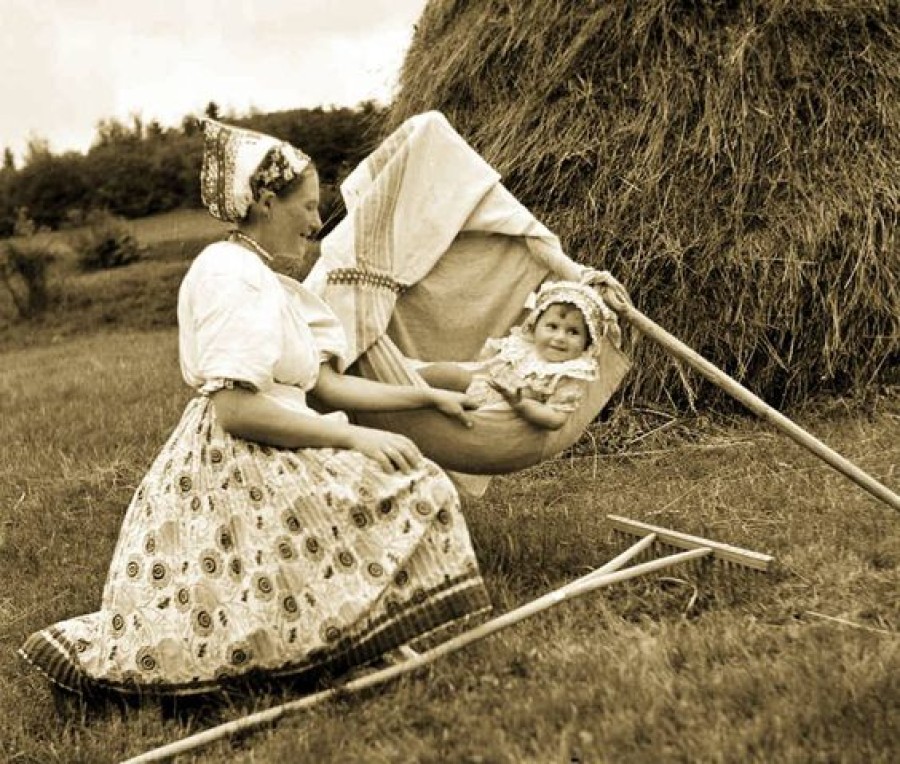Folk songs are a characteristic expression of traditional people's culture. For centuries, they have survived in the oral performance of individuals and preserved people's knowledge, their experience of reality, and were tied to ceremonies. Folklore is the art of the spoken or sung word. Every folk song lives fully and realistically at the moment it is sung.
Songs accompanied humans from birth to death
"In the past, we have encountered a great wealth of folk songs that have accompanied man throughout his life, from the cradle to the grave. Songs were sung at the birth of a child, baptism, children's games, youth dances, events, weddings, funerals, but also at work, when remembering the departure for work," says Martina Bocánová, an pedagogue and ethnologist. The possibilities of interpretation were varied and evolved with the phases of personal and social life. It was influenced by historical events, social and economic conditions, the occupation of the inhabitants, social life, neighbourly and kinship relations, customs, ceremonies, and various festivals.
 Folk lullaby as a genre has survived all times, Photo: private archive
Folk lullaby as a genre has survived all times, Photo: private archive
In the twentieth century, the situation began to change
The situations in which people spontaneously met began to change. The folklore and its traditional elements were also changing. "The First and Second World Wars, the ideological change in the form of socialism, intervened significantly. The political situation disrupted ceremonial and folklore situations associated with religion, collectivisation changed situations associated with the sanctification of land, crops, etc. The way of life, its place and functions in the culture of society changed. Although the changes were significant, folklore production did not disappear. It has been transformed into other forms, responding to the needs of the present," he further explains. Simply, part of folklore creation has remained in its natural state among ordinary people, and part has been transferred to the stages through folklore groups and ensembles. This is evidenced by the existence of various contemporary festivals such as the Myjava Folklore Festival, the Zamagurské Folklore Festival, Východná or music and dance ensembles such as SĽUK or Lúčnica.
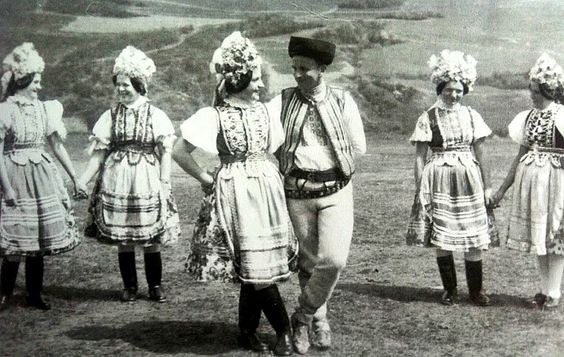 The spontaneous development of folklore was disrupted by war conflicts and regime changes, Photo: private archive
The spontaneous development of folklore was disrupted by war conflicts and regime changes, Photo: private archive
Folklore has its own position in the media
Media such as radio and television are far removed from what we understand as authentic folklore, yet they are an important gateway to the knowledge of cultures across nations. The regional specificity of folklore remains, and new ways of processing and presenting it are being used. "In the 20th century, so-called world music emerged, where folklore is a source of inspiration, but creates innovative types of expression that are close to contemporary man and his perception of the world. People often don't even realise that folklore is an everyday part of people's lives. However, they consciously create a relationship to it in other communication links and with other social functions. We refer to this phenomenon as the second existence of folklore, as folklore that is realised in a different environment with an emphasis on different moments than in the past," concludes Mrs. Bocánová.
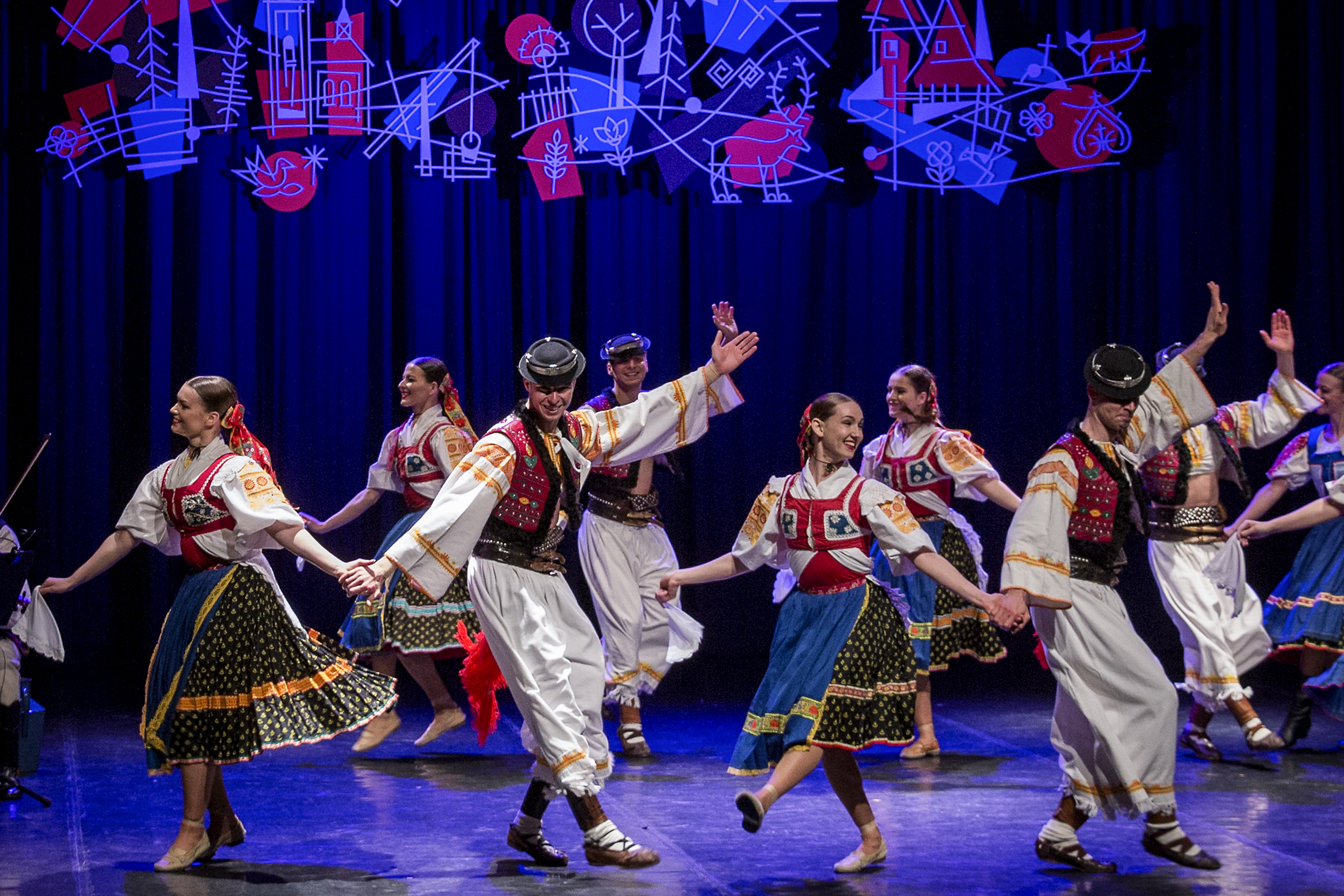 Today, folklore is being reshaped to meet the needs of modern society. However, it takes care of the key elements that need to be retained, Photo: Krajinka, Z Podpoľania - C. Bachratý, 2018
Today, folklore is being reshaped to meet the needs of modern society. However, it takes care of the key elements that need to be retained, Photo: Krajinka, Z Podpoľania - C. Bachratý, 2018
